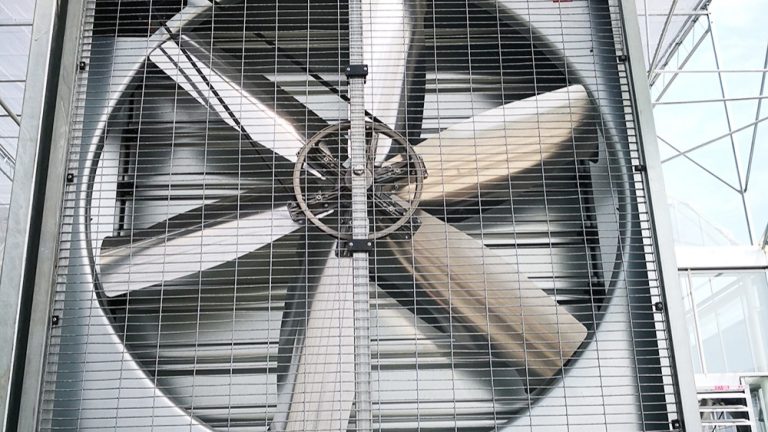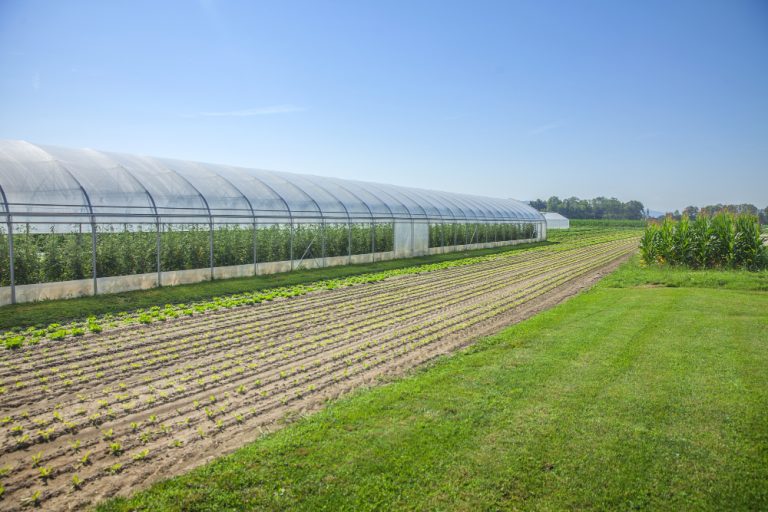
Key Points
- Research suggests greenhouse horticultural farming faces challenges like climate control, water management, pest control, energy efficiency, costs, and labor.
- It seems likely that solutions include advanced technologies, efficient practices, and strategic planning, though effectiveness can vary by context.
- The evidence leans toward integrated pest management and renewable energy as key strategies, but implementation may face economic and skill barriers.
Climate Control
Greenhouse farming requires maintaining optimal temperature, humidity, and light levels, which can be technically demanding and energy-intensive. Advanced climate control systems with sensors and automation can help, alongside energy-efficient technologies for heating, cooling, and lighting.
Water Management
Efficient water use is crucial, especially in water-scarce regions. Solutions include drip irrigation, rainwater harvesting, water recycling, and choosing water-efficient crops to reduce waste and ensure sustainability.
Pest and Disease Management
Pests and diseases can thrive in controlled environments, requiring careful management. Integrated pest management, including biological controls, cultural practices, and disease-resistant varieties, helps minimize chemical use and maintain crop health.
Energy Efficiency
High energy costs for heating, cooling, and lighting are a major concern. Using renewable energy sources, improving insulation, and optimizing greenhouse design for natural light can lower costs and reduce environmental impact.
Financial Costs
The high initial investment and ongoing operational costs can be challenging. Careful financial planning, seeking funding opportunities, and implementing cost-saving measures like energy efficiency can help manage expenses.
Labor and Skills
Finding and retaining skilled workers is difficult due to the specialized nature of greenhouse farming. Training programs, automation, and competitive wages can address labor shortages and improve workforce capabilities.
Survey Note: Comprehensive Analysis of Challenges in Greenhouse Horticultural Farming
Greenhouse horticultural farming, which involves growing plants like fruits, vegetables, and flowers in controlled environments, faces a range of challenges that impact its sustainability and profitability. This analysis, based on recent research and industry insights, outlines these challenges and corresponding strategies, providing a detailed overview for stakeholders.
Background and Context
The inquiry into greenhouse horticultural farming’s challenges was informed by a review of multiple sources, including scientific articles, industry reports, and case studies. The focus was on identifying common issues and effective solutions, considering both technical and socio-economic factors. Given the current date, March 18, 2025, the analysis prioritizes recent findings to ensure relevance.
Detailed Challenges and Solutions
The challenges can be categorized into environmental, technical, economic, and social dimensions, each with specific implications and strategies:
- Climate Control
- Challenge: Maintaining optimal temperature, humidity, and light levels is crucial for plant growth but can be energy-intensive and technically demanding. Research highlights the need for stable microclimates, especially with climate change impacts (An Analysis of Global Research Trends on Greenhouse Technology: Towards a Sustainable Agriculture).
- Solution: Implementing advanced climate control systems with sensors and automation allows real-time adjustments. Energy-efficient technologies, such as LED lighting and improved insulation, reduce energy use. The Frontiers article emphasizes comprehensive control of microclimate factors like heating, refrigeration, and ventilation (Major challenges facing the commercial horticulture).
- Water Management
- Challenge: Efficient water use is vital, particularly in arid and semi-arid regions where water scarcity is a limiting factor. The PMC article notes water as a major research focus, with studies on irrigation systems in places like Spain, Almería (An Analysis of Global Research Trends on Greenhouse Technology: Towards a Sustainable Agriculture).
- Solution: Strategies include drip irrigation for precision, rainwater harvesting, water recycling, and selecting drought-tolerant crops. The African Journal study on smallholder farmers in Kenya identified inadequate water supply as a key issue, suggesting these methods could enhance functionality (challenges in greenhouse crop production by smallholder farmers in Kisii County, Kenya).
- Pest and Disease Management
- Challenge: The controlled environment can exacerbate pest and disease issues, with evolving pests due to climate change and regulations limiting conventional pesticides. The PMC article and Frontiers both highlight pest control as a significant research area, with the latter noting consumer demand for produce with no pesticide residues (An Analysis of Global Research Trends on Greenhouse Technology: Towards a Sustainable Agriculture, Major challenges facing the commercial horticulture).
- Solution: Integrated pest management (IPM) is preferred, involving biological controls (e.g., beneficial microbes), cultural practices, and developing resistant varieties. The PMC article cites a 34.2 average citation rate for articles in the Biological Control journal, underscoring the focus on these methods.
- Energy Efficiency
- Challenge: Heating systems are major energy consumers, impacting sustainability and costs. The MDPI article discusses the need to lower energy requirements and CO2 emissions, noting greenhouse farming contributes 10–29% of global greenhouse gas emissions (Agricultural Greenhouses: Resource Management Technologies and Perspectives for Zero Greenhouse Gas Emissions).
- Solution: Solutions include using renewable energy sources like solar power, improving insulation, and optimizing greenhouse design for natural light. The PMC article mentions research on energy-saving techniques and climate control optimization, such as computational-fluid-dynamics models.
- Initial and Ongoing Costs
- Challenge: High initial investment and ongoing costs, including utilities and materials, pose financial barriers. The Velosio blog from 2024 notes rising utility costs, with one grower reporting a monthly spend increase from $100–115K to over $400K, and the African Journal study found high investment costs contributing to 48.6% non-functional greenhouses in Kenya (The Top 3 Challenges Facing Greenhouse Growers in 2024 and Ways to Get Ahead, challenges in greenhouse crop production by smallholder farmers in Kisii County, Kenya).
- Solution: Careful financial planning, seeking government subsidies or loans, and implementing cost-saving measures like energy efficiency and waste reduction are recommended. The Velosio article suggests using business management tools like Microsoft Business Central for efficiency.
- Labor and Skill Shortages
- Challenge: Finding and retaining skilled workers is difficult, especially with labor market shifts post-Covid and family-run businesses facing recruitment challenges. The Velosio blog highlights labor shortages as a top issue, and the Frontiers article notes the need for affordable automation due to labor diversity (The Top 3 Challenges Facing Greenhouse Growers in 2024 and Ways to Get Ahead, Major challenges facing the commercial horticulture).
- Solution: Providing training programs, automating tasks where possible (e.g., robotics for planting and harvesting), and offering competitive wages can address this. The African Journal study suggests insufficient knowledge as a barrier, supporting the need for education.
Additional Considerations
Beyond these core challenges, broader issues in commercial horticulture relevant to greenhouse farming include sustainable production practices (e.g., reducing GHG emissions, using peat alternatives), precision tools like AI for crop intelligence, breeding new varieties for greenhouse conditions, and moving towards net-zero horticulture by minimizing waste. The Frontiers article provides detailed strategies, such as developing common Life-Cycle Analysis tools for baseline data and innovating agro-waste repurposing (Major challenges facing the commercial horticulture).
Comparative Analysis
To illustrate, here is a table summarizing the challenges and solutions, with supporting research percentages where available:
| Challenge | Details | Solutions | Research Focus (%) |
|---|---|---|---|
| Water Scarcity | Major in arid climates, impacts irrigation. | Drip irrigation, rainwater harvesting, water recycling. | 19.7 (PMC, soil-related) |
| Pest Control | Evolving pests, regulations limit pesticides. | Biological controls, resistant varieties, IPM. | 34.2 avg citations (PMC, Biological Control) |
| Energy Consumption | Heating systems main consumers, high costs. | Renewable energy, insulation, optimized design. | Not specified |
| Climate Control | Need stable microclimate, affected by temperature increases. | Automated systems, energy-efficient tech. | Not specified |
| Financial Costs | High initial and utility costs, market barriers. | Financial planning, funding, cost-saving measures. | Not specified |
| Labor Shortages | Skill gaps, recruitment challenges. | Training, automation, competitive wages. | Not specified |
This table, derived from the PMC and other articles, highlights the research intensity and solution focus, providing a quantitative perspective where data is available.
Unexpected Detail: Economic and Social Dimensions
An unexpected aspect is the significant economic and social challenges, such as labor shortages and high costs, which are as critical as technical issues. For instance, the Velosio blog’s mention of utility costs skyrocketing to over $400K monthly for some growers adds a layer of financial pressure not always highlighted in technical discussions (The Top 3 Challenges Facing Greenhouse Growers in 2024 and Ways to Get Ahead).
Conclusion
Greenhouse horticultural farming is a complex endeavor with intertwined technical, economic, and social challenges. By leveraging advanced technologies, efficient practices, and strategic planning, farmers can mitigate these issues, enhancing sustainability and profitability. The analysis, grounded in recent research, provides a comprehensive framework for addressing these challenges, with ongoing innovation and collaboration being key to future success.




